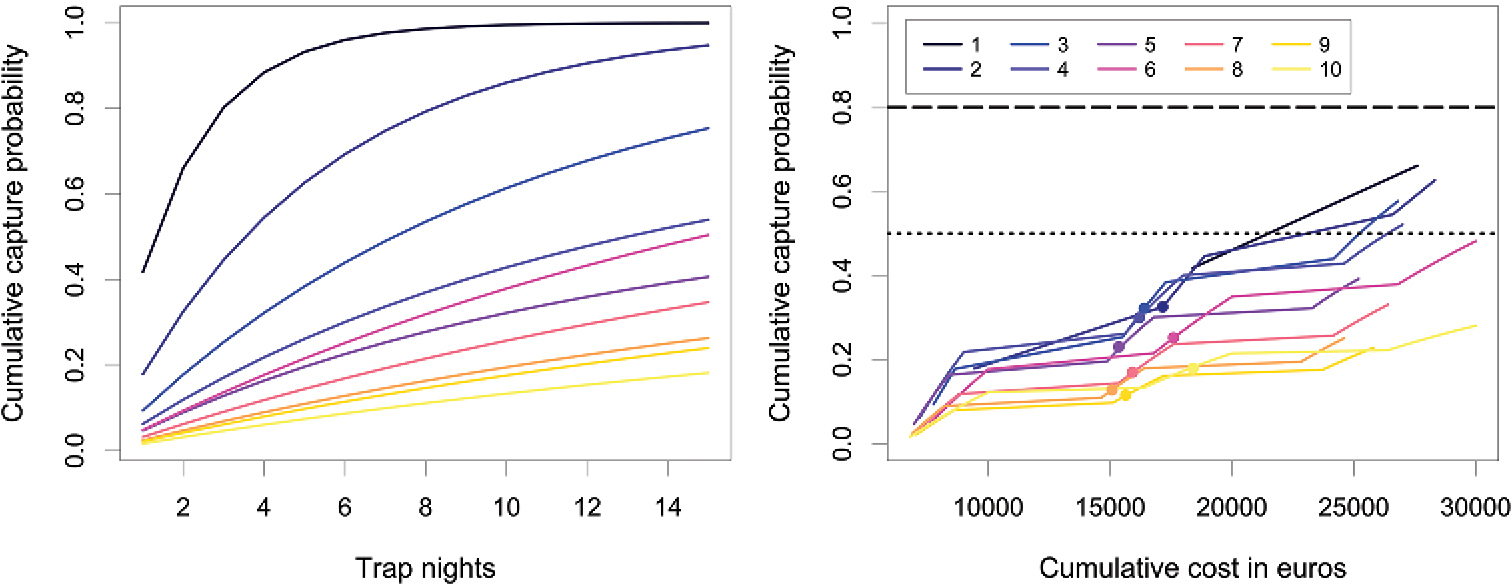
|
||
|
Cumulative rat capture probability over 15 trap-nights and their associated cumulative costs. A cumulative rat capture probability over 15 trap-nights for each of the 10 different grid layouts assessed in this study. Layout 1: 15 × 15 m; layout 2: 25 × 25 m; layout 3: 25 × 50 m; layout 4: 25 × 75 m; layout 5: 25 × 100 m; layout 6: 50 × 50 m; layout 7: 50 × 75 m; layout 8: 50 × 100 m; layout 9: 75 × 75 m; layout: 10 = 75 × 100 m (see full details of grid layouts in Table 1). Note that the asymptote for some of the sparser grids is < 1 (not shown) B cumulative rat capture probability against cumulative cost of the operations over a hypothetical maximum of 30 work-days per session. Dotted lines represent arbitrary capture probability thresholds (.50 and .80) to help read and interpret the figure. Dots mark the maximum effort available within the local constraints that apply in the wilderness reserve of Mont Panié, which is 10 persons working 4 hours a day for up to 15 consecutive days. Note that layout 1 (15 × 15 m) cannot be achieved in 15 days since a complete coverage of the grid with 10 people requires 8 splits and a total of 16 days (1 day for baiting plus 1 day to complete one trapping occasion, for each split). |